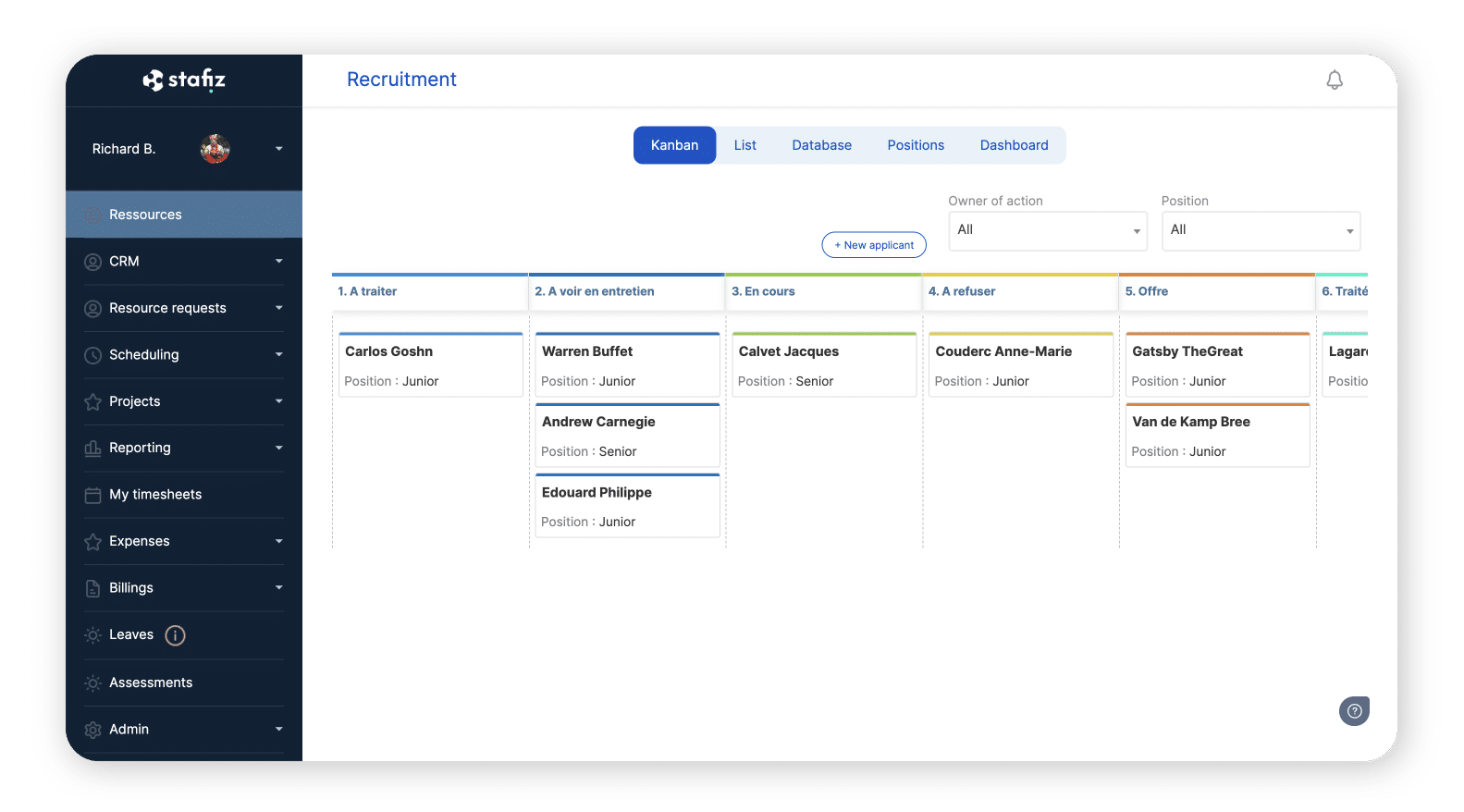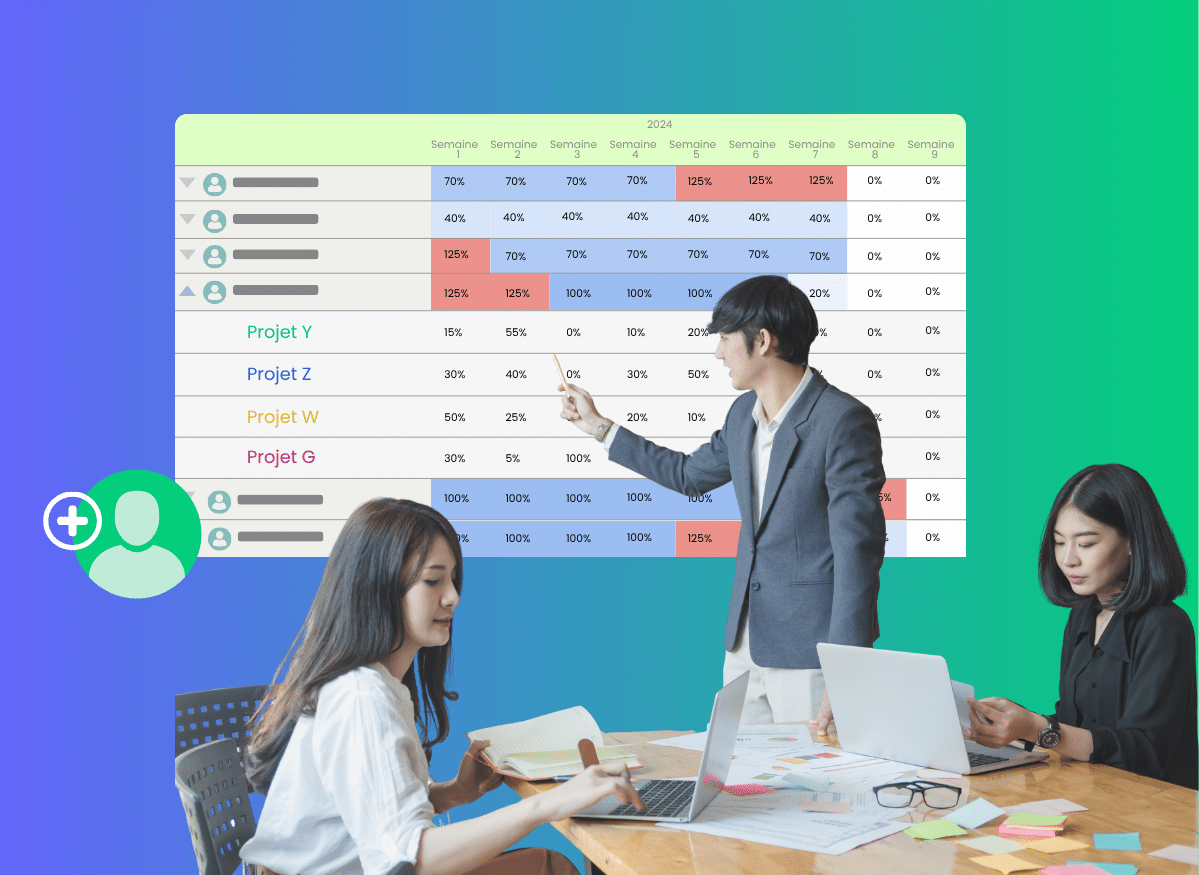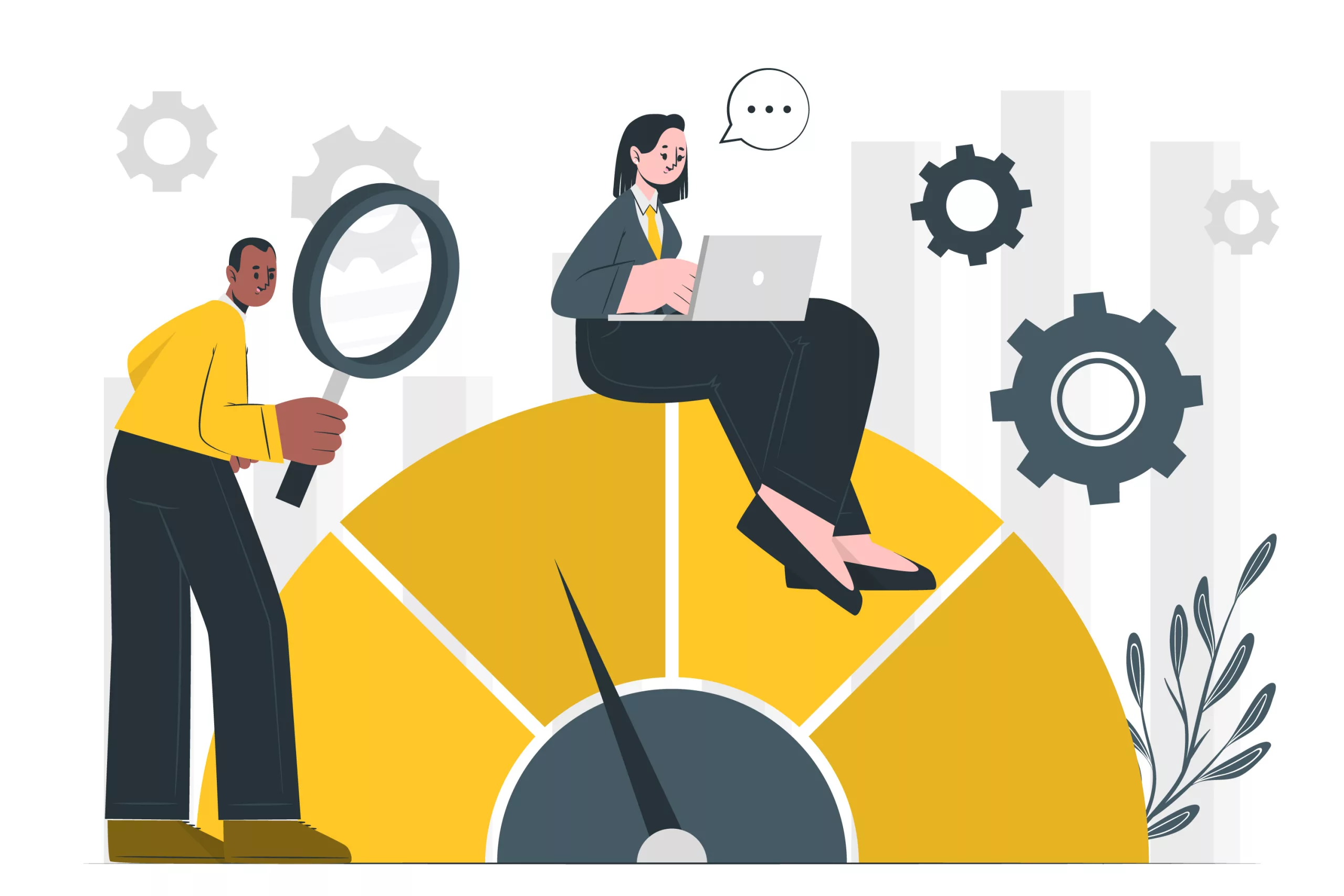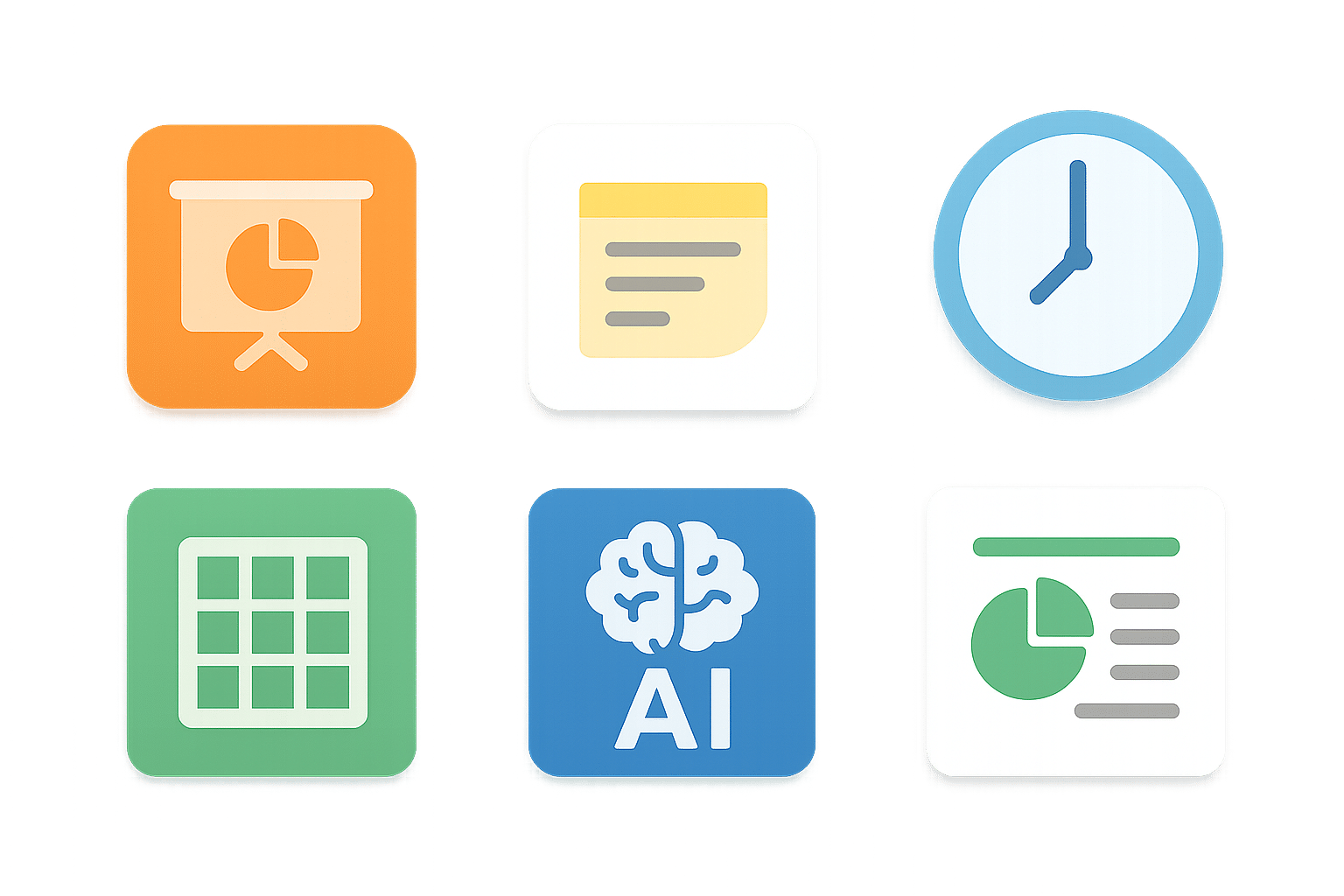Quels sont les défis liés à la croissance de votre cabinet de conseil ?

La croissance d’une société de conseil repose sur bien plus que sur son volume de projets en cours ou sur le nombre de nouveaux clients signés : elle dépend surtout de ses talents. Les défis de la croissance d’une société de conseil résident dans sa capacité à anticiper les besoins en compétences, à recruter au bon moment et à planifier efficacement les ressources.
Chaque consultant représente une part directe du chiffre d’affaires : sans gestion rigoureuse de la croissance d’un cabinet de conseil, le risque de sur-staffing ou de projets manqués augmente. C’est pourquoi cette notion est intimement liée à celle du recrutement : si les bons profils ne sont pas disponibles au bon moment, impossible de tenir les délais ou d’assurer une bonne qualité de prestation. Cette anticipation est au cœur du succès d’entreprise dans le secteur du consulting.
Comprendre la mécanique de la croissance dans le marché du conseil
Le marché du conseil en France connaît une expansion remarquable : le secteur affiche une croissance annuelle moyenne de près de 9 % depuis 2018, et les prévisions pour 2025 annoncent encore une progression de +8 % pour le conseil en stratégie et management d’après ce rapport.
Cette dynamique cache une réalité plus complexe : plus les opportunités commerciales se multiplient, plus les tensions opérationnelles et RH augmentent. Les cabinets doivent désormais concilier volume de projets, qualité d’exécution et disponibilité des talents, sous peine de voir la rentabilité s’éroder.
Une croissance proportionnelle aux talents disponibles
Comment mesurer la croissance d’une société de conseil ? Tout simplement en se basant sur ses talents, c’est-à-dire les collaborateurs qui disposent d’un ensemble de compétences qu’il est difficile de trouver sur le marché du travail. Autrement dit : plus vous avez de consultants qualifiés que vous pouvez mobiliser sur un projet, plus vous pouvez délivrer – et facturer.
Si le modèle est simple d’apparence, il est en réalité très exigeant. À part en augmentant vos tarifs ou en changeant de business model, impossible de croître sans recruter. Et si vos besoins en recrutement ne sont pas anticipés dès la phase commerciale, c’est toute la chaîne qui se grippe : vous devez refuser des missions, vos consultants sont fréquemment surchargés, et vous êtes parfois obligé de faire baisser la qualité d’exécution.
Les limites du modèle hiérarchique actuel dans le consulting
La plupart des ESN sont encore structurés selon une hiérarchie classique : junior, manager, partner. Mais ce modèle montre rapidement ses limites, car les clients recherchent des experts capables de comprendre leur secteur, leurs enjeux métiers et leur contexte. Selon l’étude de Syntec Conseil, les entreprises exigent aujourd’hui des livrables plus courts, orientés business et portés par des experts seniors.
Pour mieux répondre à ces besoins, de nombreux cabinets optent pour une approche pyramidale. Ils se spécialisent par secteur (santé, finance, industrie) ou par compétence (transformation digitale, data, RSE). Ce modèle permet d’aligner les compétences disponibles sur les attentes du marché du conseil, tout en créant un environnement propice à l’upskilling.
Enjeux RH : comment le recrutement impacte votre croissance ?
Anticiper les besoins pour éviter les goulets d’étranglement
Dans le conseil, l’écart entre les ressources disponibles et celles nécessaires à un projet est un des premiers freins au développement de son activité. Trop souvent, les ressources ne sont identifiées qu’après la signature du contrat, ou ne sont pas transmis automatiquement entre le CRM et les outils RH. Pour éviter de subir des difficultés de planification ou des retards de mission, la gestion des compétences doit être identifiée en début du processus commercial.
Avec un outil de staffing et de planification des consultants, cette anticipation des besoins se traduit directement en résultats : nos clients observent jusqu’à +20 % de projets gagnés en plus, grâce à une meilleure visibilité sur les ressources disponibles et les recrutements nécessaires.
Rétention et évolution : clé de la performance long terme
Recruter n’est pas suffisant : encore faut-il fidéliser vos talents et favoriser leur montée en compétence. Le taux de turnover moyen dans le conseil atteint jusqu’à 30 %. Cette instabilité nuit à la qualité de prestation, à la continuité des projets et à la cohérence des équipes. Au-delà de l’impact humain, le coût d’un recrutement raté oscille entre 30 000 € et 150 000 €.
Ces chiffres rappellent qu’un pilotage RH réactif ne suffit pas : il faut une démarche stratégique de fidélisation. Quelques bonnes pratiques RH à mettre en place :
- Réaliser une cartographie des compétences disponibles ;
- Analyser les souhaits d’évolution de vos collaborateurs ;
- Créer des plans de carrière personnalisés.
Ces éléments favorisent l’évolution professionnelle, l’apprentissage continu et l’intégration durable des consultants au sein de l’entreprise.

Gestion des besoins en ressources sur les projets à venir dans Stafiz
Grâce à Stafiz, toutes ces données sont centralisées et permettent un véritable accompagnement stratégique des collaborateurs tout au long de leur carrière, et favorisent un alignement durable entre performance et satisfaction. Nos clients observent que cette cartographie des compétences améliore la qualité des affectations, accélère les réunions de staffing et favorise la rétention des talents grâce à des parcours de carrière plus adaptés. Vous bénéficiez d’une vision prévisionnelle sur les profils, leurs affectations et leurs disponibilités.
“Avant d’utiliser Stafiz, nous ne parvenions pas à améliorer nos taux de staffing. Grâce à Stafiz, nous gérons beaucoup mieux nos capacités et avons amélioré nos marges. Stafiz a vraiment amélioré notre performance.”
— Isabelle Lalet, Responsable RH, Colorado Consulting
Automatiser le sourcing et la gestion du pipe candidat
Plus votre entreprise grandit, moins il est possible de gérer manuellement son recrutement. Chaque annonce attire des dizaines, parfois des centaines de candidatures. Il faut centraliser les CV, qualifier les bons profils, organiser les entretiens, envoyer relances ou refus…

Avec Stafiz, vous structurez votre pipeline, triez les CV, suivez les entretiens, et retrouvez en un clic les meilleurs profils au bon moment, même plusieurs mois après leur candidature.
Enjeux commerciaux et marché : comment se différencier sur un marché saturé ?
Différenciation par l’expertise sectorielle et la valeur
En 2025, les marchés du conseil sont saturés : il n’est plus viable de se positionner comme un cabinet généraliste. Les clients attendent des réponses spécifiques à leurs enjeux, portés par des spécialistes connaissant leur secteur et leur contexte : c’est là votre levier de différenciation face à vos concurrents.
Pricing et rentabilité : passer au value-based pricing
Face à une pression toujours plus forte sur les prix, certains cabinets passent d’un modèle T&M (régie) au value-based pricing (VBP), c’est-à-dire une facturation fondée sur les résultats obtenus. Vous ne vendez plus le temps d’un consultant, mais des produits de conseil, lesquels sont plus facile à vendre à grande échelle (et potentiellement multiplier vos prix par dix). Cette transition exige néanmoins un pilotage rigoureux de l’activité de conseil, des marges, du temps passé et des coûts.
“La gestion de nos projets est devenue tellement plus simple depuis que nous utilisons Stafiz. Le logiciel nous a permis d’automatiser notre pilotage de projet et de la performance. Cela a vraiment changé la donne !”
— Raphaël Beziz, Directeur Innovation & Transformation, YouMeO (BearingPoint)
En analysant les marges par segment ou client, la croissance d’une société de service peut être alignée sur ses projets les plus rentables.
Enjeux opérationnels et financiers : rendre la croissance scalable
Pour grandir sans perdre en qualité de prestation, ni vous désorganiser, 3 questions se posent :
- comment structurer la croissance d’un cabinet de conseil ;
- comment anticiper ses besoins en ressources futurs ;
- comment automatiser les processus clés (et lesquels).
Un ERP pour cabinet de conseil répond à ces problématiques en centralisant les processus dans un environnement unique.
L’automatisation comme levier de scalabilité
Quand les missions se multiplient, les outils artisanaux ne suivent plus. Pour maintenir la qualité de pilotage en phase de croissance, il est essentiel de digitaliser vos processus internes : gestion du staffing, suivi des projets, facturation, prévisions financières…
Automatiser ces fonctions permet non seulement de gagner en efficacité, mais surtout connaître en temps réel vos charges et votre rentabilité. Par exemple, le cabinet Artimis spécialisé dans la gestion de la relation client (50 collaborateurs) utilisait encore Excel pour leur suivi des projets et la planification, ce qui entraînait des pertes de temps et des erreurs. En tant que logiciel de gestion de projet pour les sociétés de conseil, Stafiz leur a permis d’automatiser leur suivi et de leur donner la visibilité nécessaire au pilotage de leur activité.
Planification et staffing : éviter la sous ou sur-capacité
Un cabinet de conseil grandit en alignant les bons profils, au bon moment, sur les bonnes missions ; ce qui suppose une planification fine sur plusieurs mois, ajustable en temps réel. Loin d’être une contrainte logistique, le staffing est un levier stratégique qui vous permet de visualiser les charges à venir, anticiper les pics d’activité et de vous projeter à long terme.
En moyenne, les cabinets utilisant Stafiz constatent une augmentation de +4 à +8 points sur leurs taux de charge, grâce à une meilleure planification et une allocation plus fine de leurs ressources.
Pilotage prévisionnel et rentabilité
Bien gérer un projet demande de s’assurer qu’à chaque étape la rentabilité est au rendez-vous. Pour cela, vous avez besoin d’une vision claire du réalisé et du prévisionnel. Stafiz permet de suivre la performance financière projet par projet, tout en consolidant les informations au niveau des portefeuilles de projet. Marges, trésorerie, temps passés : tout est centralisé pour offrir une vision financière dynamique, précise et actionnable.
Cette maîtrise du prévisionnel impacte directement votre revenu : les sociétés de conseil utilisant Stafiz enregistrent en moyenne +3 % de revenu effectif, grâce à l’optimisation du taux de charge et à la réduction des pertes liées au non-facturable.
Réplication et standardisation : apprendre de ses projets passés
Chaque mission terminée contient des axes d’amélioration : tirer profit de votre historique vous permet de comprendre vos succès et d’analyser ce qui doit être corrigé.
Stafiz vous donne accès à un historique détaillé par phase, tâche ou livrable et à de nombreux reportings. Vous pourrez ainsi identifier les zones à risque, les temps mal estimés et les écarts de performance. Voici comment structurer cette démarche avec notre outil de pilotage pour les cabinets de conseil.
- Décomposez les projets en phases et tâches : pour structurer le travail en lots clairs et suivre précisément l’avancement de chaque étape.
- Suivez les temps réalisés pour mesurer l’efficacité réelle des livrables et repérer les zones d’écart ou de dérive.
- Analyser les indicateurs de mission pour évaluer la performance des différentes.
Enjeux stratégiques : piloter dans la durée et sécuriser la rentabilité
Pilotage de la trésorerie et anticipation des creux d’activité
La croissance d’une société de conseil n’est soutenable que si elle repose sur un pilotage financier solide. Vous devez suivre votre trésorerie prévisionnelle, d’équilibrer charges et revenus, et d’ajuster votre planification en fonction des flux de cash.
“Nous avons fait un appel d’offres avec un cahier des charges assez strict et avons retenu Stafiz pour son rapport qualité-prix mais également car Stafiz remplit notre cahier des charges au niveau de tous les blocs fonctionnels : le staffing, la partie RH, notes de frais, suivi de rentabilité, vision consolidée de toute l’activité, etc.”
— Jean-Pierre Vignes, Fondateur, JICAP Performance
Le pilotage stratégique commence donc par une capacité à prévoir les périodes creuses, et d’organiser votre planification autour de cette contrainte. Cela permet d’aligner votre plan de charge sur vos objectifs financiers, de lisser l’activité sur toute l’année, et d’éviter les à-coups RH ou commerciaux.
Optimisation des temps non facturables
Les formations, les réunions internes ou les activités de R&D sont utiles au bon fonctionnement de votre cabinet et à la montée en compétence, mais qui n’affectent directement votre marge globale. Selon nos estimations, un cabinet de 10 consultants perd l’équivalent de 780 000 € de revenus par an sur des tâches administratives.
Stafiz vous aide à analyser et à réduire le poids des temps non facturables via :
- une visibilité fine sur la disponibilité réelle des ressources,
- un suivi précis des taux de charge par profil, équipe ou projet,
- des reportings sur la répartition entre facturable et non facturable.
Mesure du ROI global de la croissance
Votre croissance génère-t-elle réellement de la valeur ? Plus de projets signifie aussi plus de ressources mobilisées, et potentiellement plus de coûts cachés : recrutements urgents, surcharge des équipes, tâches non facturables, etc. Si ces coûts augmentent plus vite que votre chiffre d’affaires, votre entreprise grandit, mais perd en efficacité.
Analysez votre croissance d’un point de vue rendement :
- Par collaborateur : leur contribution individuelle à la marge et au CA.
- Par projet : marge réalisée, atterrissage financier, valeur livrée.
- Par client : rentabilité moyenne, fréquence de missions, potentiel futur.
Dans Stafiz toutes vos données projet sont centralisées. En visualisant les KPI-clés, vous pourrez identifier les projets à fort rendement et ajuster vos priorités business. Nos clients observent une augmentation moyenne de +15 % à +20 % de la marge projet après quelques mois d’utilisation de notre logiciel.
Avec une solution intégrée comme Stafiz, chaque cabinet peut relier la gestion des talents, les informations sur les missions en cours et les données financières pour transformer sa croissance en un véritable levier de rentabilité. L’enjeu n’est plus seulement de faire grandir son entreprise, mais de croître durablement, en alignant les talents, la stratégie et la rentabilité.
Questions fréquentes :
En centralisant la planification et le suivi des projets dans un outil dédié, il devient possible de visualiser la charge réelle et prévisionnelle de chaque collaborateur. Cela permet d’anticiper les surcharges, d’optimiser le staffing et d’ajuster les recrutements au bon moment. Un pilotage automatisé, comme celui offert par Stafiz, facilite cette visibilité continue sur les capacités et la disponibilité des équipes.
Les dérives budgétaires se maîtrisent grâce à un suivi régulier du réalisé vs prévisionnel et une consolidation financière multi-projets. En intégrant la gestion des temps, des coûts et des marges dans un même outil, les responsables peuvent identifier rapidement les écarts et ajuster les ressources. L’automatisation du reporting et des alertes préventives limite les dépassements de budget.
Excel reste utile pour des structures petites ou peu complexes, mais devient vite inadapté dès que le volume de projets ou de collaborateurs augmente. Les erreurs de saisie, les doublons et l’absence de mise à jour en temps réel entraînent une perte de fiabilité des données. Un outil intégré comme Stafiz offre une vision unifiée et dynamique du pilotage — automatisant les calculs, sécurisant les données et supprimant les ressaisies.
Les indicateurs clés portent sur la rentabilité, la charge et la trésorerie : marge par projet, taux d’occupation, chiffre d’affaires par collaborateur et cashflow prévisionnel. Suivre ces données en temps réel permet d’anticiper les besoins en recrutement, d’ajuster les priorités et de sécuriser la rentabilité globale. Un outil comme Stafiz centralise ces indicateurs pour offrir une vision claire et actualisée de la performance.
Avec la croissance, la gestion de projet doit passer d’un pilotage artisanal à un modèle structuré et automatisé. Cela implique de standardiser les processus, de fiabiliser la planification et d’assurer une visibilité globale sur l’avancement et la rentabilité. Des solutions intégrées comme Stafiz facilitent cette transition en unifiant la planification, le suivi des temps et le reporting financier.



